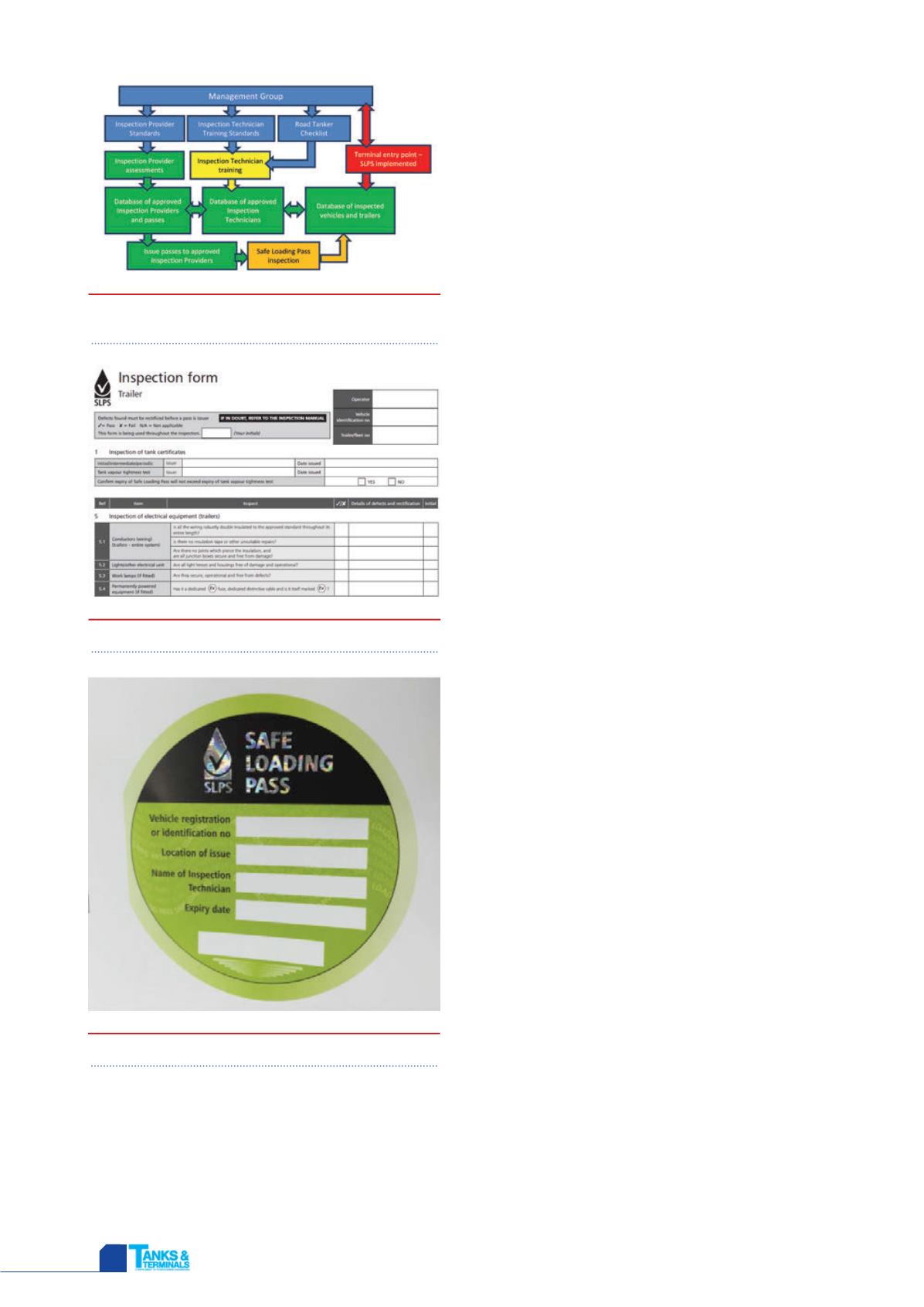
HYDROCARBON
ENGINEERING
32
accordance to mutually agreed standards. However, the fuel
supply and distribution segment of the petroleum industry has
undergone significant changes in recent years, namely:
n
The emergence of contracted hauliers.
n
A reduction in petroleum terminals and an increase in
visiting vehicles.
n
A change in terminals’ ownership and management, along
with a rise in specialist tank storage and distribution
companies.
n
A significant increase in sales to ‘ex rack’ suppliers
(i.e. supermarkets).
For this reason, and in response to changes in legislation,
such as the introduction of CoMAH and the Dangerous
Substances and Explosive Atmospheres Regulations (DSEAR), the
original SLPS has now been significantly updated and revised.
SLPS
The SLPS is recognised by members of the UK Petroleum Industry
Association (UKPIA) and the Tank Storage Association, which
together represent the majority of petroleum terminals in the
UK. It applies to terminals supplying the following fuels:
n
UN1202 – Gas oil or diesel fuel or heating oil, light.
n
UN1203 – Gasoline or petrol or motor spirit.
n
UN1223 – Kerosene.
n
UN1863 – Fuel, aviation, turbine engine.
n
UN1170 – Ethanol.
The SLPS does not apply to vehicles registered outside
England, Wales, Scotland and Northern Ireland or vehicles
carrying liquefied petroleum gas, bitumen, black oil or lubricants.
The scheme is an industry created, owned and managed
code of practice and consists of an inspection of road tankers’
parameters against agreed standards. It can form part of a
CoMAH demonstration to the Competent Authority, identifying
how major accident hazards are managed, and compliments
existing vehicle inspection law.
2
Governance
The SLPS is owned by the UK Petroleum Industry Association and
managed on its behalf by the Freight Transport Association. It is
governed by a Management Group composed of representatives
from the UK Petroleum Industry Association and the Tank
Storage Association, customers (the terminals) and the scheme’s
managers (the Freight Transport Association). Enforcement is
carried out at participating terminals’ entry points and involves
the verification of the validity of the Safe Loading Pass.
An advisory group is also in place to report on users’
experience and overall operation of the scheme. The group
includes inspection providers and haulage contractors.
Standards
The management group is responsible for agreeing and
developing the scheme’s common standards. These include:
n
Inspection provider standards.
n
Inspection technician standards.
n
Road tanker inspection form.
Inspection provider standards
Workshops (inspection providers) carrying out SLP inspections
must meet the criteria set out in the inspection provider
standards. These ensure that the workshop:
n
Has the appropriate tools to carry out a SLP inspection, such
as probe test unit, multi meter and appropriate product
storage containers.
n
Has produced a hazardous area drawing showing hazardous
zone(s) in operation during vehicle inspection.
Figure 1.
Safe Loading Pass Scheme's management
and key elements.
Figure 2.
Inspection form example.
Figure 3.
Safe Loading Pass.


